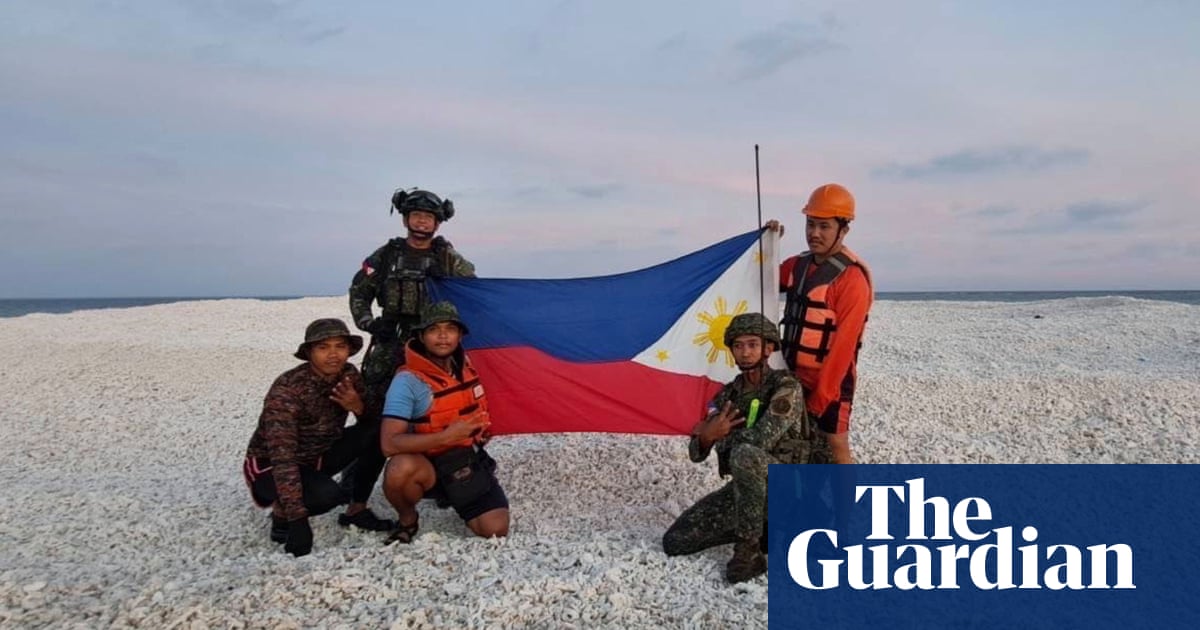Flags Fly High: China, Philippines Clash in South China Sea
Tensions escalate in the South China Sea as a Chinese coast guard ship uses a water cannon against Filipino vessels. The incident, which occurred near Second Thomas Shoal, has sparked outrage in the Philippines and renewed concerns about China's assertive actions in the strategically vital waterway. This escalation marks a significant turning point in the ongoing dispute, raising questions about regional stability and the international legal framework governing maritime claims.
A Confrontation at Second Thomas Shoal:
The incident unfolded on August 5th, 2023, when Philippine vessels attempting to deliver supplies to its troops stationed on the grounded BRP Sierra Madre warship at Second Thomas Shoal were met with aggressive actions by a Chinese coast guard ship. The Chinese ship deployed water cannons, preventing the Philippine vessels from reaching their destination. This brazen act of intimidation has been widely condemned by the Philippines and its allies.
-
Philippine Perspective: The Philippines has accused China of violating its sovereign rights and international law. They maintain that Second Thomas Shoal falls within their exclusive economic zone (EEZ), as defined by the 2016 arbitral ruling which invalidated China's expansive nine-dash line claim. The incident highlights the challenges faced by the Philippines in defending its maritime territory against China's increasingly assertive behavior.
-
Chinese Perspective: China, while not directly acknowledging the use of water cannons, has defended its actions as necessary to protect its sovereignty and maritime interests. They continue to assert their claims in the South China Sea, often disregarding international law and rulings. China’s official statements typically frame their actions as upholding order and preventing unauthorized activities within their claimed territories.
International Implications and Responses:
The incident has drawn international condemnation. The United States, a key ally of the Philippines, has strongly criticized China's actions, reaffirming its commitment to the defense of its allies in the region. Other countries, including Australia and Japan, have also expressed concern over the escalating tensions and the potential for further conflict.
-
US Response: The US has consistently supported the Philippines' claims based on international law and has increased its military presence in the region, demonstrating a clear commitment to deterring further Chinese aggression. This includes increased joint military exercises and enhanced intelligence sharing.
-
ASEAN's Role: The Association of Southeast Asian Nations (ASEAN) faces a delicate balancing act. While some ASEAN members maintain close ties with China, others, like the Philippines, are increasingly vocal in their condemnation of China's actions. ASEAN's ability to effectively address the South China Sea disputes remains a significant challenge.
The Path Ahead:
The incident at Second Thomas Shoal underscores the urgent need for a peaceful resolution to the South China Sea dispute. The international community must continue to pressure China to abide by international law and engage in constructive dialogue with its neighbors. The Philippines, with the support of its allies, must continue to assert its sovereign rights and uphold the rule of law.
Further escalation remains a significant concern. The potential for miscalculation and accidental conflict is high, highlighting the need for diplomatic efforts to de-escalate the situation and find a lasting solution. The future stability of the South China Sea, a vital shipping lane and rich in resources, hinges on the willingness of all parties to engage in peaceful and respectful dialogue based on international law.
Call to Action: What are your thoughts on this escalating conflict? Share your opinions and insights in the comments below. Let's discuss the future of the South China Sea and the role of international law in resolving this crucial dispute.

